By Wayne Henderson -
Being able to produce top quality saves in high tempo situations separates the very best Goalkeepers from their peers. Being able to replicate these situations in training sessions is not always easy, If this drill is able to be performed consistently to a high standard at the required tempo it is a good indication that your ‘keeper has the technical attributes required to perform at a high level. Due to the high tempo that this drill is to be performed at this session is specifically for adult goalkeepers who are technically competent and in good physical shape.
The set up
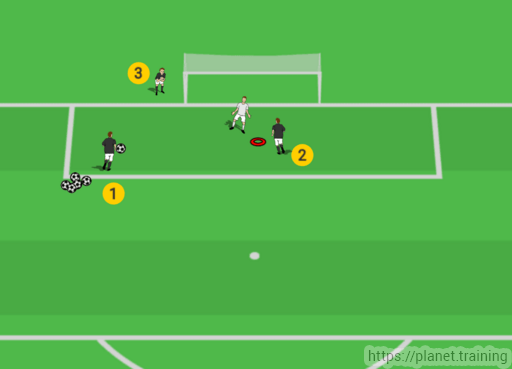
3 feeders - 1 working goalkeeper, at least 4 footballs and 1 goalkeeping area.
Feeder number 1 always feeds the ball into the same area i.e. near post top corner.
Feeder number 2 always takes the deposited ball out of the “drop-off area” in order that the goalkeeper can repeat the drill without footballs getting in the way.
(The drop-off area could either be a small hoop, an upside down cone or an area marked off where the ‘keeper must return all caught saves to)
Feeder 3 is always ready to quickly remove any dropped or stray footballs that may find their way into the area that the goalkeeper is working in.
The drill
The goalkeeper starts the drill facing feeder number 1 standing next to the “drop-off area” On Feeder number 1’s command the goalkeeper quickly moves laterally across to get him/herself into position to make a diving save towards their near post.
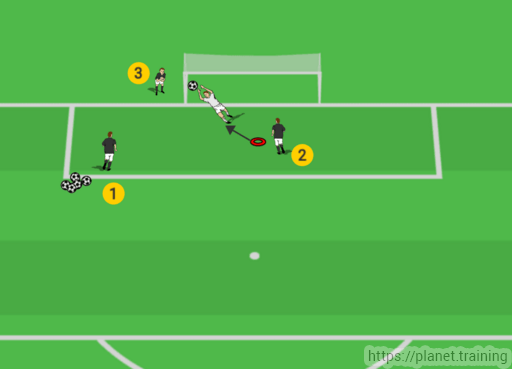
When the goalkeeper has made the save he/she then moves back across the area laterally to place the ball in the “drop-off area”
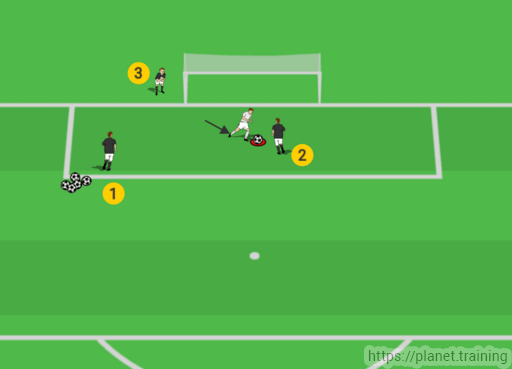
As soon as the keeper places the ball down into the marked area feeder number 2 takes the ball away and puts it into a safe place out of the way, at the same time feeder number 1 is picking up another ball ready to feed it in the same front post area as before.
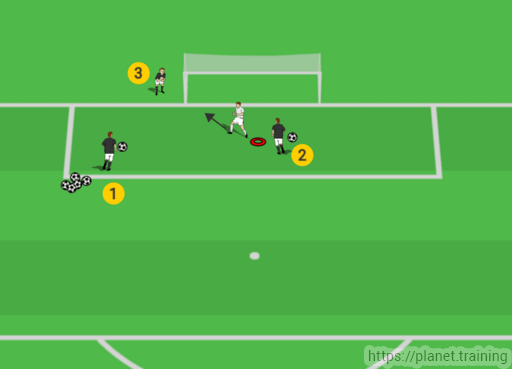
As before, when the time is right feeder number 1 throws the ball into the near post top corner area – the quality and timing of these feeds are crucial to the quality of the session. If the ball is released too early the goalkeeper won’t be able to make a save, and if the throw is too late the ‘keeper will be able to make an easy save.
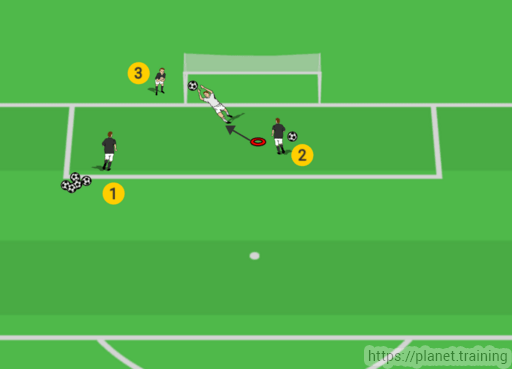
When the goalkeeper makes the required save, they will, as before move laterally back across to return the ball to the already emptied “drop-off area”.
If the ‘keeper can’t catch the ball (i.e. the ball gets tipped around the post or onto the post, he/she still moves back across to the “drop-off area to continue the flow and tempo of the drill. If a ball is loose in the working area that might inhibit the goalkeeper, feeder number 3 must quickly move in to remove any “stray footballs” in order for the drill to be completed without delay.
Coaching points and Progression
A maximum of 4 – 6 saves per set, depending of the age, fitness and quality of your goalkeepers
Always work to both right and left sides.
Different type of saves can be used but Due to the high tempo of the drill it is important that the coach uses the same type of save throughout the drill i.e. only Top corner, medium height or low diving save used for one drill.
By Wayne Henderson


